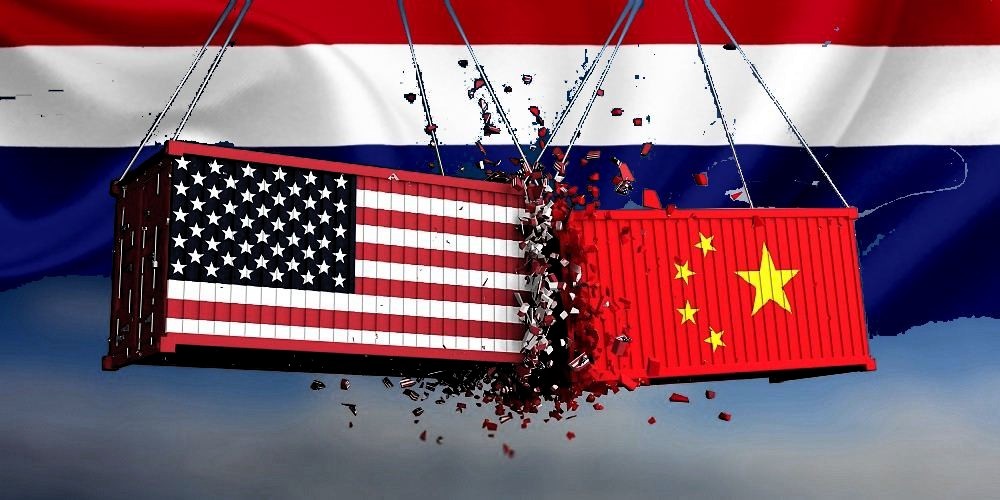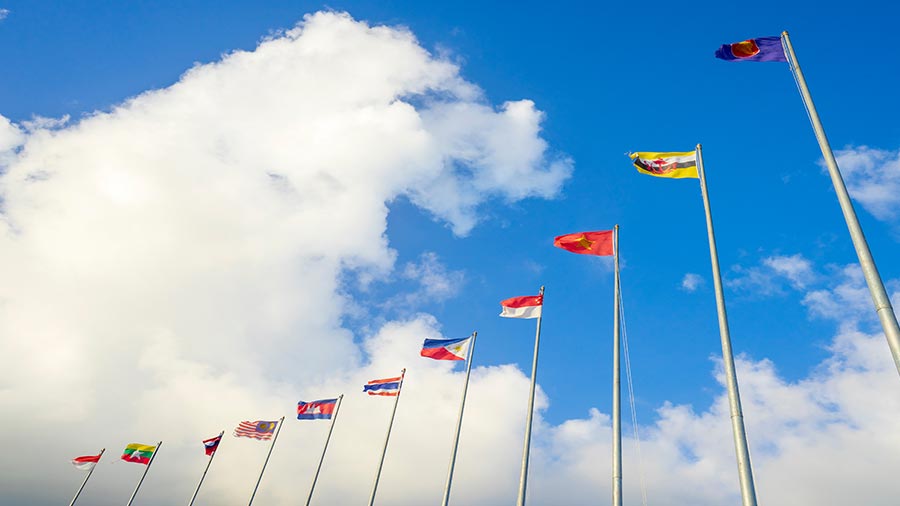Economics
Trumping financial risks in Asia
Twenty years after the Asian financial crisis of 1997–98 and the global financial crisis of 2007–08, storm clouds are gathering once again

In July 2018, the Bank for International Settlements (BIS) asked whether the world was heading towards a perfect financial storm.
With the US stock market heading for record highs even as emerging markets like Argentina and Turkey were running into foreign exchange problems.
Twenty years after the Asian financial crisis of 1997–98 and the global financial crisis of 2007–08, storm clouds are gathering once again.
Conventional economic models failed to predict the last two crises because the technical definition of financial risk is measured volatility.
The global financial crises proved that current models of financial risk, largely used by banks and financial regulators, are totally blind to Black Swan or Grey Rhino events of unmeasurable uncertainty.
This time round, the consensus is that the Grey Rhino (an event with high probability and high impact, but where the trigger is uncertain) is the looming rise in US interest rates in response to a domestic economy that is running at nearly full capacity, with low unemployment levels and signs of creeping inflation.
As the BIS has warned, non-financial borrowers outside the United States owe US$11.5 trillion dollars, of which US$3.7 trillion is owed by emerging markets.
Global financial fragility comes from two structural imbalances
First, the United States is the leading deficit country in terms of trade and debt, owing the world a net US$7.7 trillion, or 39.8 per cent of GDP.
This amount is growing because of rising fiscal debt and the low level of national savings.
Second, below-par global growth since 2008 has been underwritten almost completely by central bank unconventional monetary policies, which have brought interest rates to an unsustainably low level.
Market fears that the large central banks will withdraw quantitative easing — QExit — threaten to jeopardise the current frail recovery, which is why US President Donald Trump is also against the Federal Reserve raising interest rates.
If geopolitical risks trump financial risks, what could go wrong in the coming months?
Western analysts think that the trigger will be a Chinese debt meltdown. But Chinese debt is internal debt, as China has foreign exchange reserves equivalent to 188 per cent of its foreign debt and still runs a current account surplus.
China’s debt problem is an internal debt issue, very much like that of Japan. While Japanese debt is owed largely to Japanese households, Chinese debt is largely owed by state-owned enterprises and local governments to state-owned banks. In such a situation, China is well positioned to rewrite its national balance sheet, a privilege not possible for more privately dominated markets.
Financial risks are rising not just in China, but globally
Dun and Bradstreet’s Global Risk Matrix, published in May 2018, suggested that US interest rate rises could trigger a fresh debt crisis, sending the global economy into contraction.
Echoing this sentiment, the International Monetary Fund’s July 2018 World Economic Outlook argued that rising trade tensions are threatening growth recovery in Europe, Japan and Britain more than predicted.
Any overheating in the United States would trigger currency crises for some emerging markets.
In short, we cannot separate financial risks from geopolitical risks. Any unforeseen event arising from a geopolitical miscalculation, climate change disaster, war or cyber-induced disruption could trigger another round of financial crises.
Read the rest of this article here :
Business
Gordonstoun Severs Connections with Business Led by Individual Accused of Espionage for China

Gordonstoun school severed ties with Hampton Group over espionage allegations against chairman Yang Tengbo. He denies involvement and claims to be a victim of political tensions between the UK and China.
Allegations Lead to School’s Decision
Gordonstoun School in Moray has cut ties with Hampton Group International after serious allegations surfaced regarding its chairman, Yang Tengbo, who is accused of being a spy for the Chinese government. Known by the alias "H6," Mr. Tengbo was involved in a deal that aimed to establish five new schools in China affiliated with Gordonstoun. However, the recent allegations compelled the school to terminate their agreement.
Public Denial and Legal Action
In response to the spying claims, Mr. Tengbo publicly revealed his identity, asserting that he has committed no wrongdoing. A close associate of Prince Andrew and a former Gordonstoun student himself, Mr. Tengbo has strenuously denied the accusations, stating that he is a target of the escalating tensions between the UK and China. He has claimed that his mistreatment is politically motivated.
Immigration Challenges and Legal Responses
Yang Tengbo, also known as Chris Yang, has faced additional challenges regarding his immigration status in the UK. After losing an appeal against a ban enacted last year, he reiterated his innocence, condemning media speculation while emphasizing his commitment to clear his name. Gordonstoun, on its part, stated its inability to divulge further details due to legal constraints.
Source : Gordonstoun cuts ties with business chaired by man accused of spying for China
Business
China Dismantles Prominent Uyghur Business Landmark in Xinjiang – Shia Waves

The Chinese government demolished the Rebiya Kadeer Trade Center in Xinjiang, affecting Uyghur culture and commerce, prompting criticism from activists amid concerns over cultural erasure and human rights violations.
Demolition of a Cultural Landmark
The Chinese government recently demolished the Rebiya Kadeer Trade Center in Urumqi, Xinjiang, a vital hub for Uyghur culture and commerce, as reported by VOA. This center, once inhabited by more than 800 predominantly Uyghur-owned businesses, has been deserted since 2009. Authorities forcibly ordered local business owners to vacate the premises before proceeding with the demolition, which took place without any public notice.
Condemnation from Activists
Uyghur rights activists have condemned this demolition, perceiving it as part of China’s broader strategy to undermine Uyghur identity and heritage. The event has sparked heightened international concern regarding China’s policies in Xinjiang, which have been characterized by allegations of mass detentions and cultural suppression, prompting claims of crimes against humanity.
Rebiya Kadeer’s Response
Rebiya Kadeer, the center’s namesake and a notable Uyghur rights advocate, criticized the demolition as a deliberate attempt to erase her legacy. Kadeer, who has been living in exile in the U.S. since her release from imprisonment in 2005, continues to advocate for Uyghur rights. She has expressed that her family members have suffered persecution due to her activism, while the Chinese government has yet to comment on the legal ramifications of the demolition.
Source : China Demolishes Uyghur Business Landmark in Xinjiang – Shia Waves
Business
Yakult Unveils Restructuring Plans for Its China Operations | ESM Magazine

Yakult reorganized its China operations, dissolving the Shanghai subsidiary while opening a new branch. Manufacturing now consolidates at Wuxi and Tianjin plants, aiming for enhanced efficiency and growth.
Yakult’s Business Reorganisation in China
Yakult has announced a significant reorganisation of its operations in China, aiming to enhance competitiveness and sustainability. The company has dissolved its wholly-owned subsidiary, Shanghai Yakult, which previously managed manufacturing and sales functions. This strategic move is expected to streamline its operations in the Chinese market.
New Branch and Manufacturing Adjustments
Yakult’s head office in China has established a new branch in Shanghai, transferring the sales division from Shanghai Yakult to this location. As of December 6, the branch has started selling various products, including Yakult and its light variants. Meanwhile, the manufacturing plant in Shanghai has ceased operations, with production capacity now absorbed by the Wuxi and Tianjin plants to ensure efficient supply.
Commitment to Growth
The company remains steadfast in its dedication to the Chinese market and is optimistic about future growth. Yakult reassured stakeholders that the reorganisation will have minimal financial impact and aims to enhance efficiency. Founded in 2005 in Shanghai, Yakult China currently employs approximately 2,216 individuals, reinforcing its commitment to customer health and expanding operations.
Source : Yakult Announces Reorganisation Of China Business | ESM Magazine






